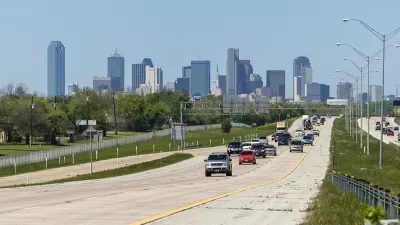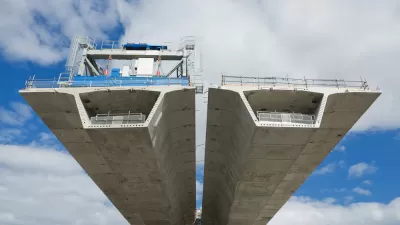From his home in Brainerd, Minnesota (population 13,500), this fiscally conservative engineer leads a growing movement. His slow-and-steady approach to urban development has real bipartisan appeal.

As a civil engineer, Charles Marohn used to oversee projects that widely overshot the mark, providing unnecessary infrastructure and saddling towns with inflated costs. He realized that the suburban mainstream offered "solutions that not only encouraged sprawl, but also created places that were financially unsustainable."
Peter Callaghan reports on the man behind Strong Towns, first a blog and now a non-profit dedicated to the economic viability of existing communities.
Marohn is anti-suburb, but he doesn't fit the typical urbanist profile. "He describes himself as a fiscally conservative Republican; most of those who share his philosophy are liberal Democrats. Also, he was a civil engineer first, not a city planner."
"It's a perspective that has led Marohn to conclude that the nation's 70-year experiment with suburban development is a failure — because it is economically unsustainable. That is, the lack of density does not produce tax revenue necessary to cover current services, let alone the long-term costs of maintaining and replacing those services."
In Marohn's words, "Woodbury is going away, no matter what. There is no renewal process. There is no next step in its evolution." He sees both parties as complicit in an "infrastructure cult" dedicated to top-down projects, be they highways or transit. Instead, he says, we should look to the period before the postwar suburban boom for wiser models.
FULL STORY: Why a conservative Republican from northern Minnesota wants to kill the suburbs

Alabama: Trump Terminates Settlements for Black Communities Harmed By Raw Sewage
Trump deemed the landmark civil rights agreement “illegal DEI and environmental justice policy.”

Planetizen Federal Action Tracker
A weekly monitor of how Trump’s orders and actions are impacting planners and planning in America.

The 120 Year Old Tiny Home Villages That Sheltered San Francisco’s Earthquake Refugees
More than a century ago, San Francisco mobilized to house thousands of residents displaced by the 1906 earthquake. Could their strategy offer a model for the present?

Ken Jennings Launches Transit Web Series
The Jeopardy champ wants you to ride public transit.

BLM To Rescind Public Lands Rule
The change will downgrade conservation, once again putting federal land at risk for mining and other extractive uses.

Indy Neighborhood Group Builds Temporary Multi-Use Path
Community members, aided in part by funding from the city, repurposed a vehicle lane to create a protected bike and pedestrian path for the summer season.
Urban Design for Planners 1: Software Tools
This six-course series explores essential urban design concepts using open source software and equips planners with the tools they need to participate fully in the urban design process.
Planning for Universal Design
Learn the tools for implementing Universal Design in planning regulations.
Clanton & Associates, Inc.
Jessamine County Fiscal Court
Institute for Housing and Urban Development Studies (IHS)
City of Grandview
Harvard GSD Executive Education
Toledo-Lucas County Plan Commissions
Salt Lake City
NYU Wagner Graduate School of Public Service





























